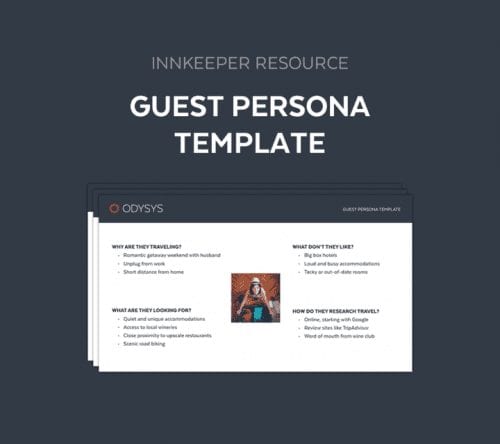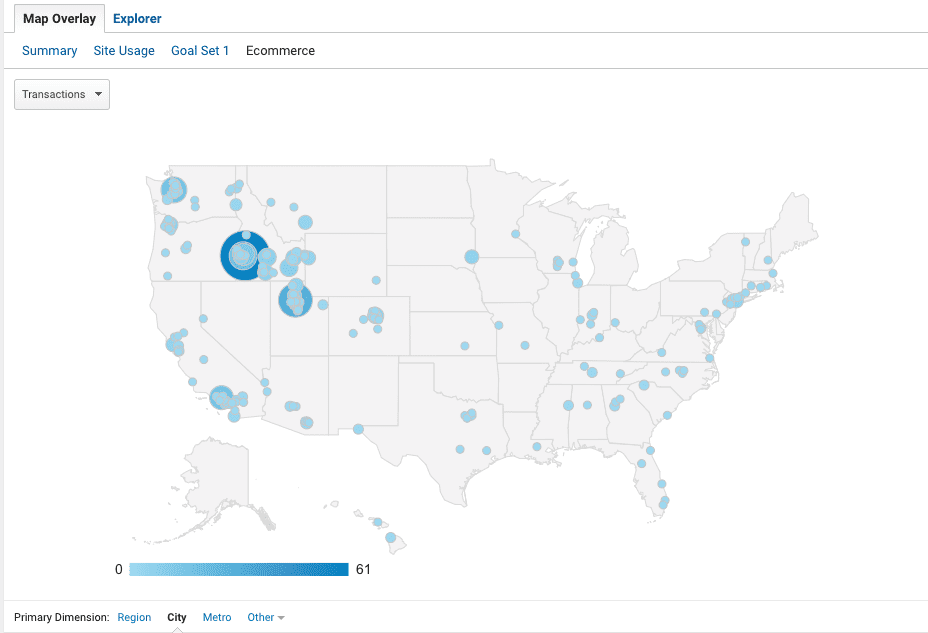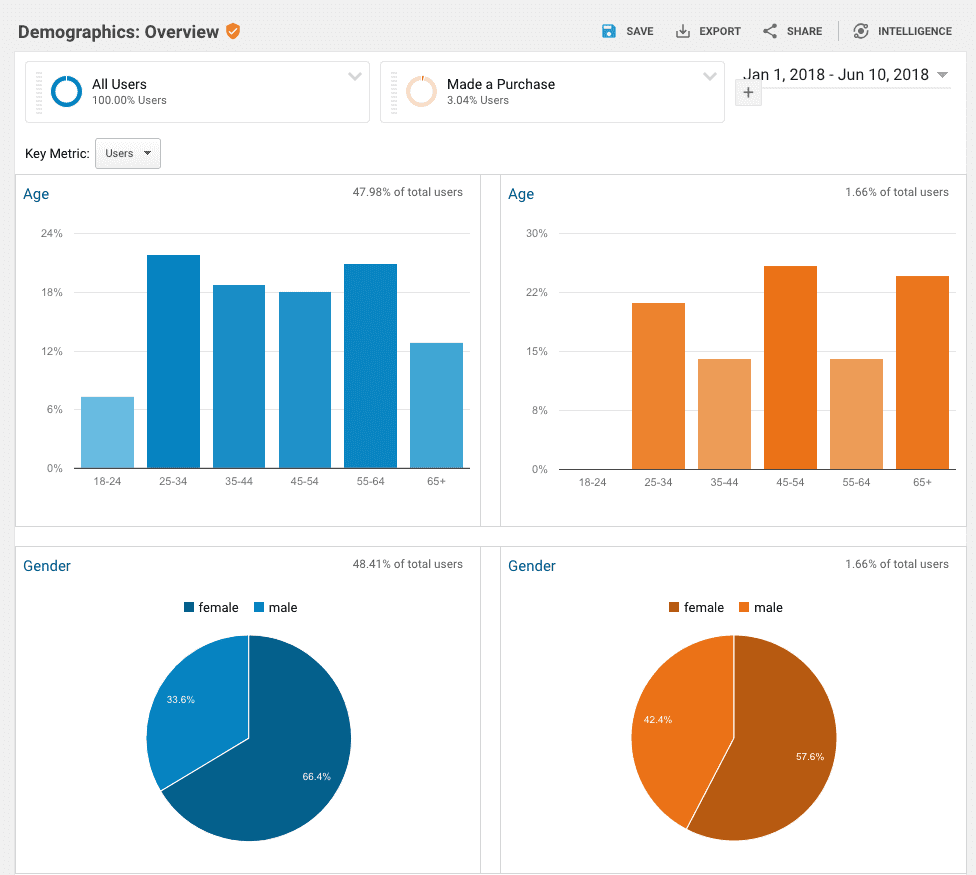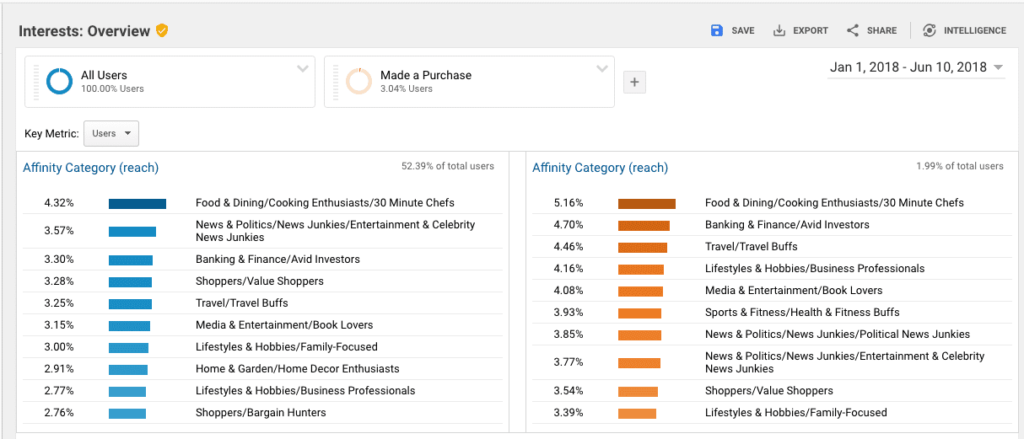Understanding your ideal guest is an essential step on our No BS Guide to Marketing For Innkeepers. Last month, we covered the first step on the marketing road map: setting clear goals.
Now it’s time to tackle the second: defining who you are marketing to. In this stage, you’ll set clear parameters for the type of guest you want to attract and come up with a clear definition of your “Ideal Guest.” You’ll need this picture in your mind before you can focus on the flashier, more traditional aspects of marketing like website design, social media advertising, email campaigns, traditional PR, and more.
Defining your ideal guest affects every marketing decision you make from here on out, down to the font and images you use on your site. If that sounds like an over-exaggeration, trust us, it isn’t. We’ve even done it ourselves. At Odysys, we know that our ideal customer is an independently owned inn, bed & breakfast, small hotel, lodge, or destination resort with 20 rooms or less located in the U.S, Canada, Latin America, or other English speaking countries.
Our busy customers focus primarily on guest experience, meaning they often don’t have a lot of time to dedicate to digital marketing and may rely a little too heavily on OTAs. They have a mid-to-upper market ADR (average daily rate) and know how to use email well.
Yes, THAT is how specific we get when defining our ideal customer and that is how specific we want you to get too. You know your customers/guests better than anyone, so hopefully, this should come pretty easy.
How to Get the Right Kind of Reservations
Many of our customers come to us with goals like “Get more reservations” or “Drive more direct bookings.” Hopefully, after our last post, you’ve made your goals a little more specific.
However, we know that getting more guests is important. We also know that to get them, you have to understand what kind of guests you want and what kind of guests you are already attracting. Take a moment to think about your average guest. Think about demographics like:
- Budget
- Age Range
- Where they are traveling from (see more below)
- Travel needs
Do you want to attract budget travelers? Families? Retired couples? Luxury vacationers? Likely, one single property isn’t going to attract all of these above. You need to know why guests come to your property and what they want from you once they arrive.
To help you narrow things down, consult our handy Guest Persona template. It focuses on four major questions:
1. Why Are Your Guests Traveling?
Why do people come to your destination? If you are in a popular wine region, many of your guests might travel to your area to take advantage of the vineyards. You’ll want to play this up in your marketing and website design. If you are located near a national park, this is also something you’ll want to highlight. Clearly define why your guests travel to your destination before you focus on what your property can provide them.
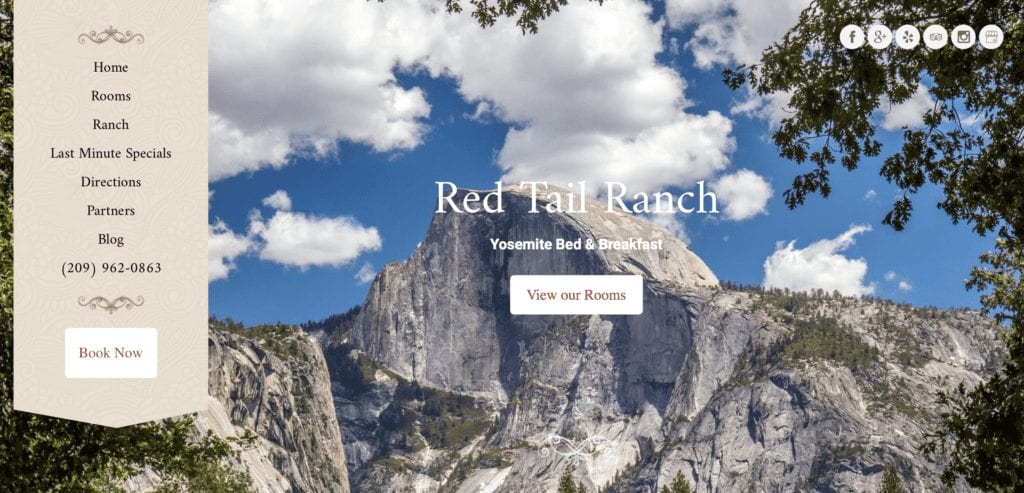
2. What Are They Looking for?
What type of travel experience do your guests want to have when they come to your property? What type of services or amenities do you have that help you deliver that experience to them? Maybe your guests come to your property because you are centrally located in a historic district minutes away from the hustle & bustle of downtown.
Maybe they choose you because of your warm service, delicious breakfasts, and spacious rooms. This is where distinctions like “boutique,” “urban,” “historic,” or “rustic” can really come in handy. This is also where you can play up your amenities or the unique “story” behind your property.
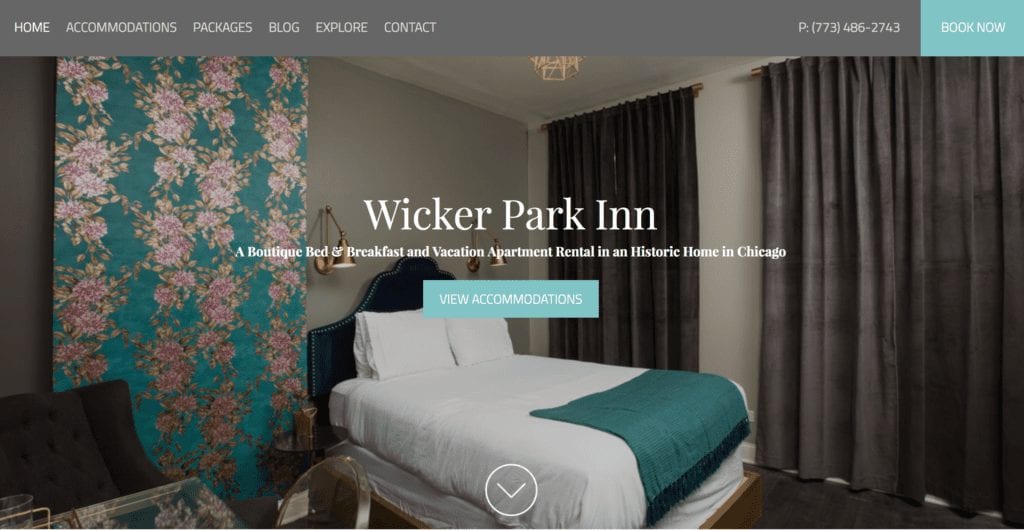
3. What Don’t They Like?
Understanding what your guests don’t want is almost as important as understanding what they do. If your ideal guest is a retired couple looking for a relaxing getaway in wine country, they likely don’t want a busy social hub where guests come to go out, meet new people, and stay up late.
If your ideal guest is a business traveler, they don’t need a property close to the best local hiking or kayaking offerings. Knowing what your ideal guests don’t like will keep you from accidentally highlighting in your marketing efforts or sending any false messages to potential guests. Really, this stage on the roadmap is all about understanding guest preferences and doing your best to meet them both before and after making a booking.
4. How Do They Research Travel?
It is also helpful to do a little research on how your target demographic does their research. Do they research through guidebooks, social media, online directories, word of mouth? Likely it is a mix between all of the above, but understanding the travel customer journey will help you better target your desired guests in the dreaming and research stages prior to making a booking.
Using Data to Create Your Persona
The easiest way to go about creating your guest persona is to collect anecdotal information. Simply talking to your guests or polling them (over email, a questionnaire at check-out, ect.) will help you to build a composite sketch. But a little raw data doesn’t hurt either. This can help you quantify and detail who your ideal guests are.
Google Analytics and Facebook are reliable sources of audience data. Here are some examples of a few insights you can gain from Google Analytics
(Note: This requires enabling demographic data collection in your Analytics property settings).
This is a chart from Google Analytics. It shows you where the property’s bookings are coming from by city. This property is located in Sun, Valley Idaho, a popular destination for skiing and outdoor activities. The biggest dark blue circle represents about a 200 mile radius and nearly 25% of this property’s bookings.
Based on this data, we can assume that a large percentage of the guests likely drive to the property, meaning this audience might might be interested in directions, parking, and possibly budget-friendly activities & dining options.
The next biggest markets for this property are Los Angeles, Seattle, and Salt Lake City. These groups are probably less familiar with the area and will be interested in basic information about the location, shuttle services, and popular activities.
For the guests coming from bigger cities, one might assume they are looking for more cosmopolitan offerings like cocktail bars, theater offerings, boutique shopping, and so on. Based on location, you might also start to infer a few things about their tastes, demographics, travel needs, and so on.
Google Analytics can also help you gain data about guest demographics, such as their age range and gender.
Google Analytics’ Audience Reporting tool can be enabled to show you demographic & interest data of your users and of the people that actually book with you. This chart shows that 45-54-year-olds make a lot of bookings, even if they don’t make up the greatest percentage of traffic to the site.
The person making the booking skews a little more male even though the typical website visitor skews more heavily female. This demographic data might reveal that your guests are typically couples. One might do the research whereas the other one makes the actual reservation.
On top of that, you can configure Google Analytics to identify the main interests of your guests. This data can really help you flesh out your personas, especially when combined with age/gender demographics. Knowing the interests of your guests will help you tailor your web content to target those interests.
For this property, you can see that Food & Dining rank high on the list of guest interests. We would ask this property: Does the homepage of your website highlight food, whether it is your breakfast offerings or popular restaurants in your area? Is there a section of the website dedicated to local food & dining options? How are you specifically catering to the foodies that come to your property?
Taken altogether, there are a couple things we can pretty confidently infer about this property. Based on these analytics, you might determine that this property has 2 major personas:
- Cost-conscious & family-focused local couples aged 65+ living within 200 miles who are interesting in cooking, food, and politics. Typically arrive at property via car.
- Big city visitors aged 45-54 who are interested in food & dining, travel, sports, and fitness. Typically fly to property.
Isn’t it amazing what you can infer with just a little bit of research? Like this example, you may discover that you attract two different types of groups with equally important but entirely different interests.
Building your Guest Persona will help you figure out how to best appeal to them and how you might market to them in a variety of different ways across platforms.
